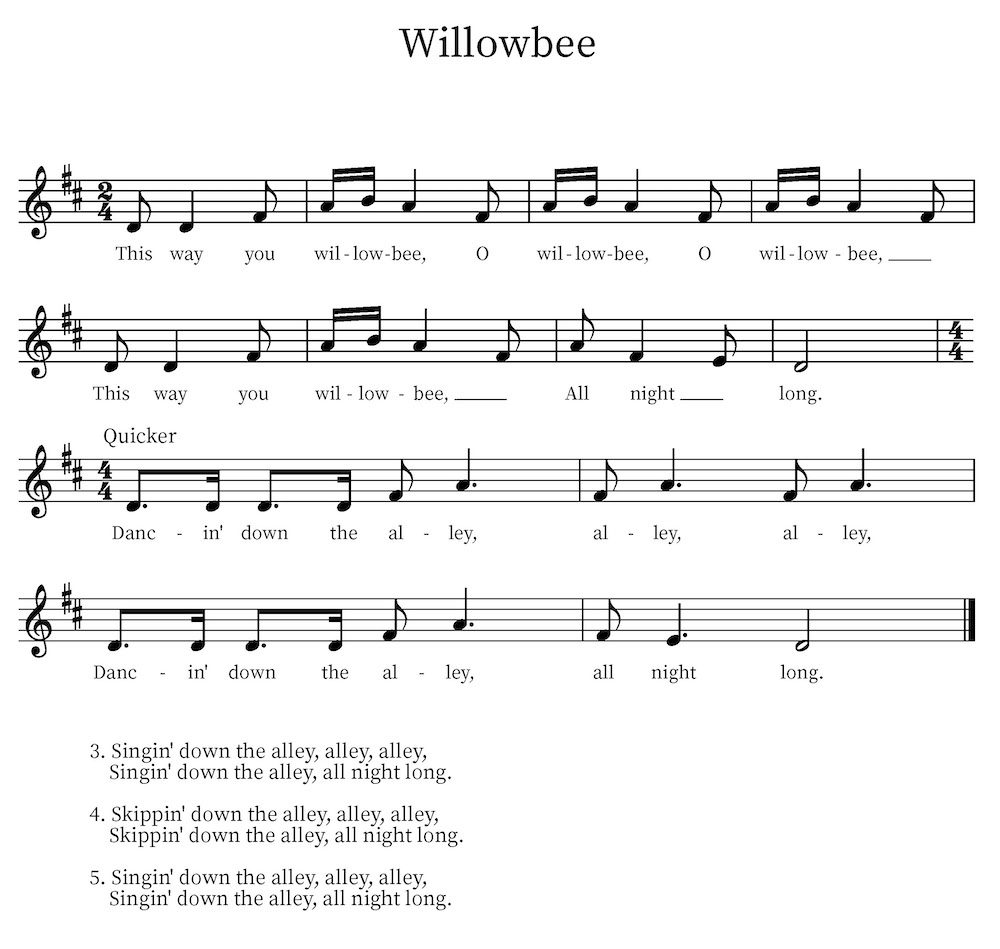Willowbee is great song for practicing movement, rhythms, and the pentatonic scale. For younger grades, I would focus on the movement and listening for syncopation. For older grades, I would encourage creativity by having them create a hand-clapping game that mimics the syncopated rhythms.

Movement (K-2)
You know I love adding to and changing traditional dances, so the following is my version:
- Students form two parallel lines facing each other, scarves in hand
- “This way you willowbee…”
- Students join hands with person across from them (via scarves) and perform a sawing motion to the beat as they sing
- “Dancin’ down the alley…”
- Students in the lines raise their arms up to form an arch for the head couple to dance under
- Couple at the head of the line dancing/singing/skipping down the center and joins the ends of the lines
- Students in the lines raise their arms up to form an arch for the head couple to dance under
- “This way you willowbee…”
- Students join hands with the person across from them and the pattern repeats until all couples have danced down the center
Once students are comfortable singing the song independently, have them create new verses with different movements. For example, they could use new movements such as “swaying down the alley” or “bouncing down the alley”. This would be a great activity to try with Pre-K too!
Hand-Clapping Game (3-5)
This is a great song for working on syncopation. However, it’s very child-like, so I would approach it differently with older grades. Instead of dancing, ask them to create a hand-clapping game that mimics some of the rhythms in the song. To do this, ask them to listen to the song and identify the repeating rhythmic patterns. I’ve highlighted the rhythms that they can identify.

Once students have identified the rhythms you want them to work on, they can begin creating a clapping game. You could also have students create a routine on bucket drums or compose an arrangement for the song in Noteflight or Musescore.
You can use Google Slides™ to focus on a specific rhythm. Cover up the rhythm using shapes, like I did in the GIF below. Then, students can focus on decoding the “mystery rhythms”. You can download a copy of this simple Google Slides™ Presentation by clicking HERE.

